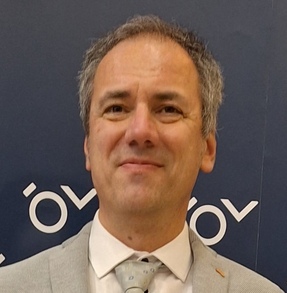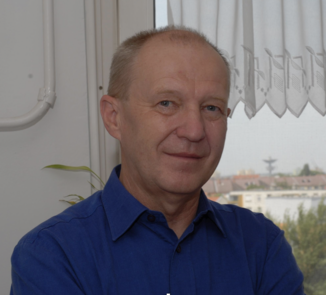About the Speaker |

Gabriella Casalino is currently an Assistant Professor (Tenure Track) at the Computational Intelligence Laboratory (CILab) of the Informatics Department of the University of Bari.
Her research is focused on Computational Intelligence methods for interpretable data analysis. She is actively involved in eHealth, Data Stream Mining, and eXplainable Artificial Intelligence. Her work primarily focuses on the medical and educational domains.
She holds membership in the IEEE Task Force on Explainable Fuzzy Systems, the Interdepartmental Center for Telemedicine of the University of Bari-CITEL, and the HELMeTO Task Force, which concentrates on Higher Education Learning Methodologies and Technologies Online. She is an active member of the computer science community and contributes by organizing committees of workshops and special sessions in prestigious international conferences such as ECAI and IEEE WCCI. Additionally, she serves as an Associate Editor for the international journals such as Scientific Report, IEEE Transactions on Computational Social Systems and Soft Computing. She is a Guest Editor for several special issues in IEEE SMC Magazine, IEEE Transactions on Computational Social Systems, and IEEE Systems Journal. She is a Senior member of the IEEE society and has received several awards for her research, including the prestigious FUZZ-IEEE best paper award.
Lecture title |
Explaining Evolving Data
Abstract |
Digitalization has transformed our daily lives, leading to the continuous collection of vast amounts of data from various interconnected devices. This evolving data serves as a crucial source of information that must be processed efficiently and in almost real-time to extract meaningful insights. However, the dynamic nature of data streams poses significant challenges, requiring specialized algorithms that can adapt to changes, process information dynamically, and update models incrementally without retraining from scratch.
One major obstacle in handling evolving data is the availability of labeled examples. Obtaining labeled data is costly, time-consuming, or even infeasible in many real-world scenarios. Semi-supervised learning approaches mitigate this issue by enhancing learning performance by leveraging labeled data, when available, and the underlying geometric structure of the unlabeled data.
Beyond efficient data processing, explainability is fundamental in critical domains such as healthcare and education, where decisions must be transparent, interpretable, and justifiable. Fuzzy logic provides a compelling framework for addressing both the learning and explainability aspects of evolving data. It enables handling uncertainty inherent in data while offering human-interpretable explanations in natural language, bridging the gap between complex computational models and user understanding.
This talk explores how a prototype-based evolving fuzzy algorithm can be used to derive meaningful explanations in dynamic environments. The algorithm continuously adapts to new data while maintaining interpretability and fostering trust in AI-driven decision-making processes.
About the speaker |

Lucian Coroianu received their M.Sc degree in mathematics from the University of Oradea, Romania, and his Ph.D in mathematics from the Babes-Bolyai University in Cluj-Napoca, Romania, in 2013 (summa cum laude). He has a habilitation in Information Sciences and Technologies (in 2023) and one in mathematics (in 2024), both obtained from the Obuda University in Budapest. He is an Associate Professor at the Department of Mathematics and Informatics at the University of Oradea.
Coroianu published 75 papers in peer-reviewed journals, 16 papers in Conference proceedings, and a monograph (jointly) at Springer in 2016. His research is focused on the theory of fuzzy sets, especially fuzzy numbers, using approximation theory or optimization techniques. He is also interested in optimizing OWA aggregation operators and finding optimal OWA weights. Other contributions concern the theory of approximation operators, such as max-product type operators or neural network operators activated by sigmoidal functions, but also in the sensitivity analysis of parameterized quadratic programs and, in particular, orthogonal projections.
He is a Member of the European Society for Fuzzy Logic and Technology (EUSFLAT). He has been an Area Editor for the Journal Fuzzy Sets and Systems since 2018. He was the recipient of the ''Adelina Georgescu'' prize from the Romanian Society for Industrial and Applied Mathematics (ROMAI) in 2014.
Lecture title |
Approximation methods in fuzzy analysis
Abstract |
In this talk I will present some of the main results concerning various approximation problems in the theory of fuzzy numbers and of OWA operators. There are two principal ways to approximate fuzzy numbers. The first method is the one in which one approximates the membership function. The suitable metric here is the Chebyshev metric. We will present here approximations based on the Bernstein max-product operator and then using the extended inverse F-transform including an approach where the components of the direct F-transform are obtained by minimizations in the Lp - norm, 1≤p<∞. These non-linear approaches have the advantage that they preserve better the shape of a fuzzy number than the ones based on linear approximation operators. The second method to approximate fuzzy numbers is when we work with the level sets representations. We will recall some results concerning the approximations by trapezoidal and more generally, piecewise linear fuzzy numbers by L2-type metrics including also results on Lipschitz continuity. This second problem can be reduced to the study of quadratic programs and the techniques used to solve such problems are inspirational for problems that apparently belong to other areas. However, the goal is the same, that is, the finding of algorithms that can be implemented easily on computers. Such problems will be discussed in this presentation insisting on the constrained OWA aggregation problem but also on some methods to find optimal OWA weights under some constraints. A common feature in all these studies is that some of the results obtained in problems that belong purely to the domain of optimization (or more generally convex analysis) or approximation theory can be used to solve (or improve, as for example the obtaining of sharper Lipschitz constants) concrete problems in fuzzy sets theory. But also the reverse is true, problems that are relevant in fuzzy sets theory can lead to interesting problems in optimization or approximation theory. This talk will emphasize some of these aspects too.
About the Speaker |

Affiliation: University of Szeged, Hungary.
Academic degrees: Ph.D. degree (1977, summa cum laude, “The Determination of the Arhelius Parameters of a Hydrogen Transfer Reaction Using a Semi-Empirical Method”), C.Sc. degree (1994, “Fuzzy Sets’ Structure in the Aspect of Multicriteria Decision Aid”), D.Sc. degree (2012, “One Class of Continuous-Valued Logical Operators and Its Application: Development of the Pliant Concept”).
Visiting positions: Leningrad, Leipzig, and Bucharest; Scholarships: DAAD Scholarship (Aachen), Alexander von Humboldt Scholarship (Aachen), European Scholarship (Bristol); Academic visits: Paris, Helsinki, Turku, Tampere, Linz, and Klagenfurt. Awards: Supervisor Master Award; Pro Sciencia Award for Outstanding Student; László Kalmár Award; DataScope IT Award (Brussels); and the Best Software of the Year Award at COMDEX in 1999 (Las Vegas).
Membership in international organizations: IFSA; Public Member of the Hungarian Academy of Sciences (Operational Research); Member of the Hungarian Association of Operational Research; Member of the Hungarian Humboldt Association.
Research interests: Computational and artificial intelligence; theory of fuzzy sets; multicriteria decision making; genetic and evolutionary algorithms; and operations research.
Scientific results: Dombi operator; Solymosi-Dombi weighting procedure; aggregative operator. Author of more than 200 publications. By 2025, more than 80 scientific articles had titles featuring the procedures he developed, with his name mentioned.
Lecture title |
On the fuzzy concept
Abstract |
We can define a variety of different approaches, which we call fuzzy. There are many different operator classes, in the literature (T-norms, T-conorms, Ling-theorem). These operators are generalizations of conjunctive and disjunctive operators. We also have many types of negation operators (Sugeno, Hamacher, Yager). The implication operators also form a new class of operators. Many books have been published on this topic. But it is still not enough as other problems arise related to the definition of operators, such as equivalence and symmetric difference operators. The unary operators also form a large class. All these above-mentioned problems are related to the concept of continuous-valued logic.
We can speak of a fuzzy concept if we have some knowledge about the arguments of the operators. Another key aspect in fuzzy theory is how we define the membership functions. Nowadays, more than twenty different types exist.
We can choose operators with different membership functions. The suitability of our particular choice depends on the use case.
In this lecture, the models depend on a single generator function of a single operator system and each operator has only one generator function. The membership function represents either a soft inequality or equality. This membership system is consistent with the logic of ours. We will illustrate what we mean with concrete examples and theorems.
About the speaker |

Marek Z. Reformat received his M.Sc. degree (with honors) from the Technical University of Poznan, Poland, and his Ph.D. from the University of Manitoba, Canada. He is a Full Professor in the Department of Electrical and Computer Engineering at the University of Alberta.
His research activities focus on developing methods and techniques for intelligent data modeling and analysis, leading to the translation of data into knowledge. He uses the concepts of Computational Intelligence – with fuzzy computing and possibility theory in particular – as elements necessary for capturing relationships between pieces of data and knowledge and for introducing human aspects to data analysis and decision-making processes, resulting in more human-aware and human-like systems.
He has published over 100 peer-reviewed publications in Computational Intelligence, knowledge representation and processing, and software engineering. He is an Associate Editor of several international journals. He is the former president of the North American Fuzzy Information Processing Society (NAFIPS) and the past president of the International Fuzzy Systems Association (IFSA).
Lecture title |
State Assessment in Complex Systems: An Evidence Theory Approach to Multi-granular Data Integration
Abstract |
Complex real-world systems present significant analytical challenges due to their multi-level hierarchical structures and interdependent subsystems. These systems are characterized by intricate relationships where each subsystem's state depends on numerous inputs and the conditions of interconnected components. A fundamental challenge lies in precisely defining these subsystem states – definitions that inherently contain uncertainty and are often articulated by domain experts using information granules (such as linguistic descriptors or interval representations) to manage areas of inexactness.
Current methodologies fail to comprehensively address the multiple uncertainty sources while providing reliable state assessments across system levels. This paper presents an innovative approach for determining local and global states in hierarchical multi-component systems under uncertain conditions. Our methodology leverages Evidence Theory principles and introduces a new technique for evaluating uncertain target satisfaction, where the targets themselves are granular state definitions.
The proposed framework systematically manages three critical sources of uncertainty: measurement imprecision in subsystem inputs, propagated uncertainty in state determinations based on interconnected subsystems, and the inherent imprecision within expert-defined state descriptions. By calculating satisfaction degrees between inputs and imprecise state definitions, we can identify the most probable state of each subsystem and, consequently, of the entire system.
We provide a detailed exposition of our methodology alongside a comprehensive case study demonstrating the practical application of our approach in determining system states despite imprecise subsystem state definitions. This work addresses a significant gap in complex systems analysis under uncertainty conditions.